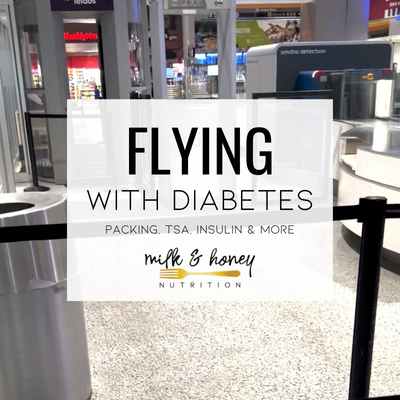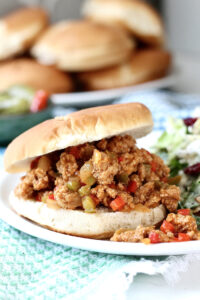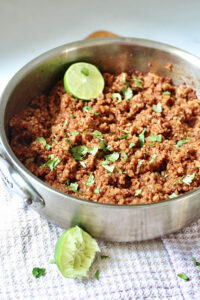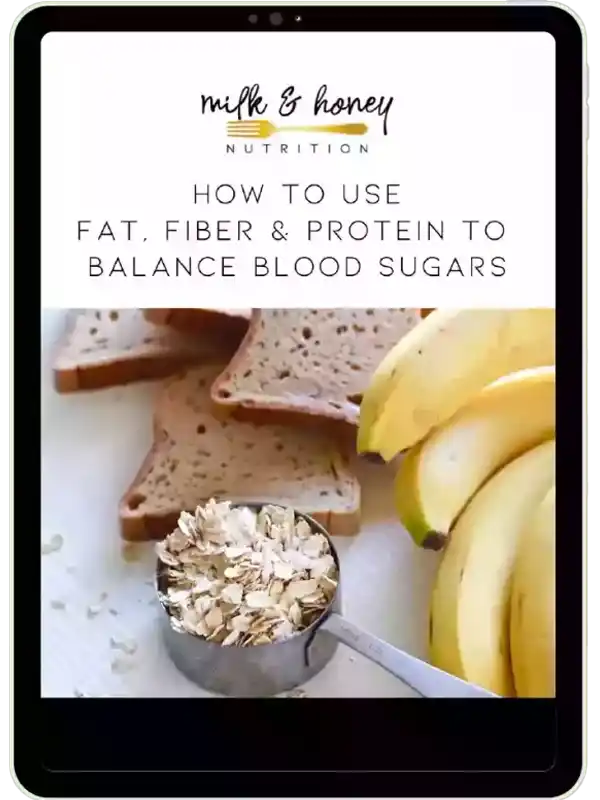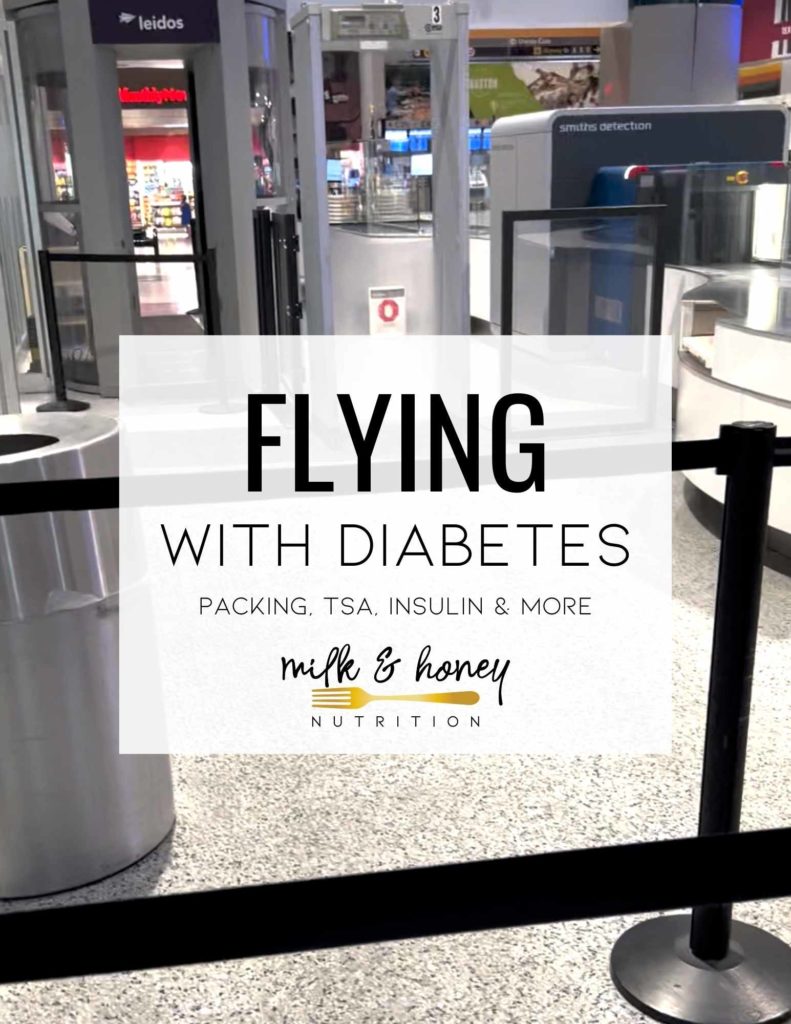
If you’re planning on getting on an airplane and flying with type 1 diabetes, you’ll find everything you need to know in this post!
Flying with type 1 diabetes (or any other type of diabetes) can bring a whole new set of challenges if you’ve never done it before. Below, we’ve compiled everything you need to consider and what to bring with you to have a mostly stress-free airport and airplane experience!
What’s it like flying with diabetes?
Getting through airport security to a flight on time can already be stressful, but add in living with diabetes, and it can be quite the intimidating experience. There are many decisions and preparations that if not made ahead of time, can make the airport and TSA experience quite stressful. BUT, don’t worry, because once you know how to be prepared, you’ll be able to get through the airport and to your destination with as little stress as possible.
My personal experience traveling with type 1 diabetes
I’ve been living with type 1 diabetes for over 30 years now, and I’ve taken many flights in that time. Diabetes technology and treatment has changed dramatically in that time along with TSA requirements at airports in the US.
So, what’s it like flying with type 1 diabetes supplies? For the most part, when I’m prepared and know what to tell TSA agents and what (and how) to pack ahead of time, the airport experience is pretty low stress.
I’ve only ever had one bad experience with TSA that involved a pretty invasive pat down. I do, however, believe this was a result of a poorly trained TSA employee and not a system-wide issue.

TSA rules for diabetes supplies
We’re going to cover a whole host of topics and tips related to flying with type 1 diabetes in this post, but I also want to put some important links here at the top before we get started so you can easily come back to them at anytime:
- TSA rules for insulin pumps and glucose monitors
- TSA guidelines for insulin
- ADA (American Diabetes Association) airplane travel tips
- TSA refrigerated medication guidelines (medications that need ice packs)
- TSA disability notification card
Things to consider when flying with diabetes supplies
Overall, as you’re packing and preparing to head to the airport you’ll want to consider several things:
- How long is your flight?
- Will there be a layover that requires lots of time in another airport?
- How long will you be gone from home?
- Will you have access to a pharmacy where you are going in case of an emergency need?
- Are you traveling alone or with someone?
- Do you know how flying typically impacts your blood sugar?
- Are you checking a bag for your flights?
- Do you need to get refills on any of your prescriptions before you leave?
What to pack in your checked suitcase when flying with type 1 diabetes
For the most part, most of your diabetes supplies should NEVER be placed in a checked bag for two reasons:
- Lack of temperature control and pressure control in the cargo area of a plane can alter and ruin medications and supplies, including insulin and diabetes tech supplies.
- If your bag is lost, you will be without your necessary supplies.
One exception to this is I will often pack extra low blood sugar supplies in my checked bag. But, I also have low blood sugar supplies in my carry on bag just in case.
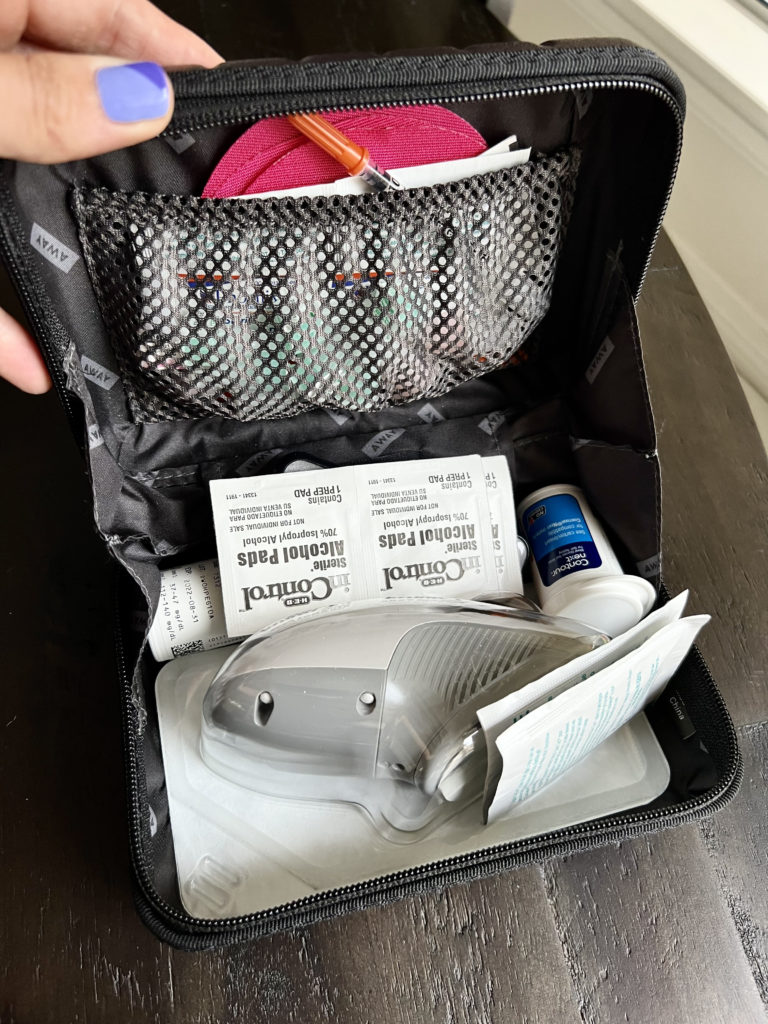
What to pack in your carry on bag when flying with type 1 diabetes
All of your diabetes supplies should be in your carryon bag and with you at all times. The following is a general list of things to consider bringing. Check with your doctor about any additional supplies you may need when flying with type 1 diabetes or any other type of diabetes.
When thinking about the amount to bring of all of these, I recommend doubling the amount you would normally need for the time you’re gone. Example: If you’re going to be gone for 5 days, pack diabetes supplies for 10 days.
- Insulin and other medications
- Syringes and/or pen needles
- Alcohol swabs
- Insulin pump supplies
- Continuous glucose monitor supplies
- Blood glucose meter and test strips
- Extra batteries
- Low blood sugar treatments
- Protein and moderate carbohydrate snacks
- Contact information for your doctor’s office
- TSA disability card and/or a signed note from your doctor
Don’t forget about your EXTRA medical carry on bag!
You may have read that list above and thought, how in the world am I going to fit all that and the usual stuff everyone else typically brings in a carry on bag in one bag?!? Well, you’re in luck! Most airlines allow people to have an extra carry on bag for medical supplies. But, you have to make sure that the bag ONLY has medical supplies in it and the things necessary to manage your diabetes during your trip. (This is also where it helps to have a letter from your doctor listing the various things you may need to bring with you. I’ve included a picture of the letter I bring with me below.)
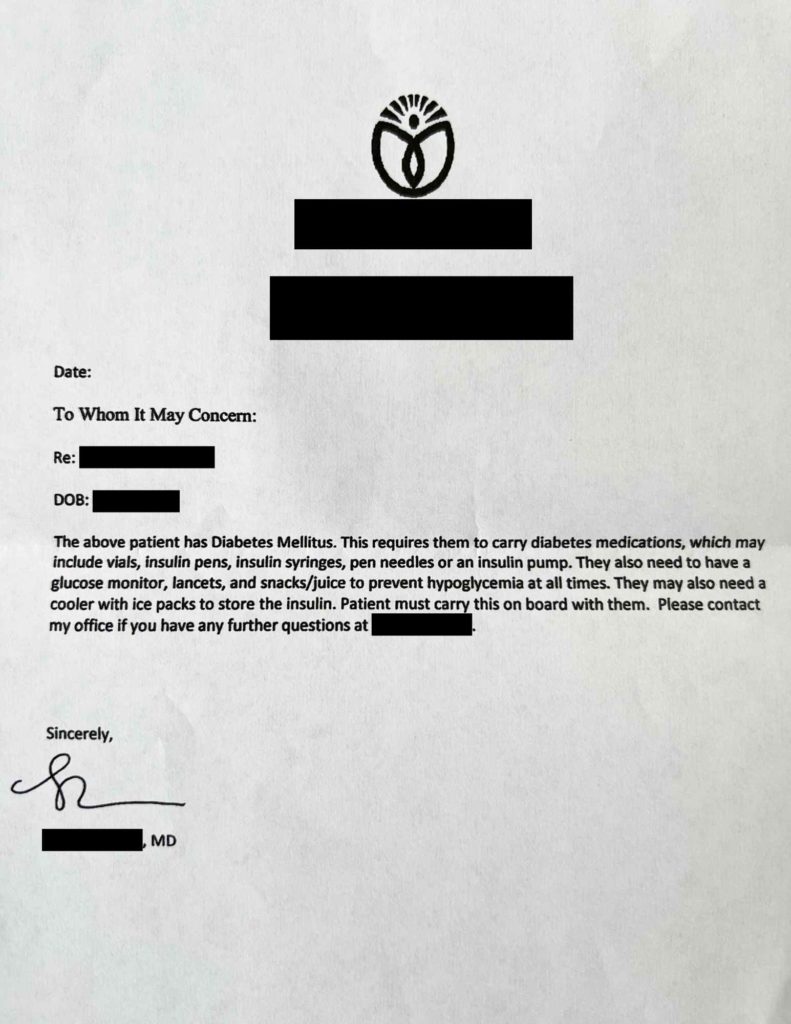
Getting through airport security with type 1 diabetes
Below I’m going to detail what has worked best for me over the years to get through security as quickly and efficiently as possible. I’ve gone through security with and without TSA Pre-Check so I’ll lay out both scenarios for you.
And, as an overall strategy tip: Remember that it is incredibly helpful to TSA employees and yourself to communicate well when going through security. Speak up ahead of time and tell them what devices you have on and where on your body they are as well as the fact that you have supplies and medication in your bag.
Airport security with type 1 diabetes (without TSA Pre-check)
- Have your diabetes supplies in a separate bag and hand it to the TSA agent behind the X-ray scanner for bags. Tell them you have medication and medical supplies that cannot go through the scanner and you want it to be “hand inspected.”
- Once you’ve handed off your belongings, if you wear an insulin pump and/or a continuous glucose monitor notify the agent by the body scanner that you cannot go through the full body scanner because of your medical devices. Request to go through the metal detector or have a pat down by a TSA agent.
- If you are required to have a pat down (which you most likely will be), just follow their instructions and tell them where on your body your devices are. They will perform the pat down and then swab your hands.
- If all goes well, you’ll be allowed on your way and sent to gather your belongings.
Airport security with type 1 diabetes (with TSA Pre-check)
- Have your diabetes supplies in a separate bag and hand it to the TSA agent behind the X-ray scanner for bags. Tell them you have medication and medical supplies that cannot go through the scanner and you want it to be “hand inspected.”
- With TSA Pre-Check you most often don’t have to worry about the full body scanners and instead simply pass through the metal detectors. Your diabetes devices are safe to go through metal detectors.
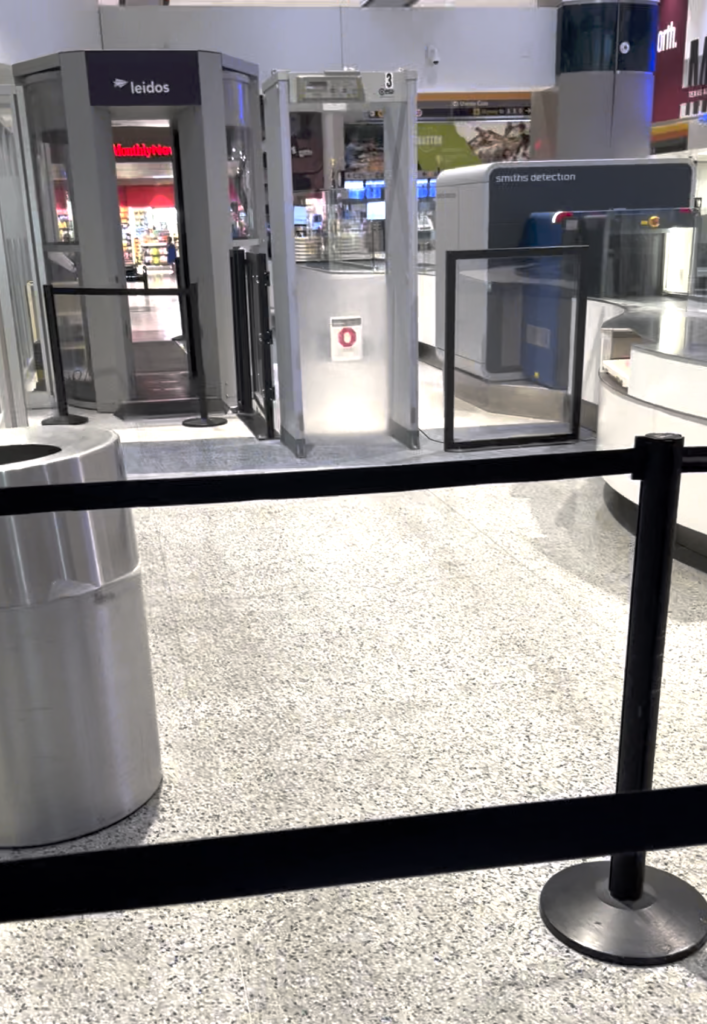
Diabetes supplies and airport scanners
In case you’re skimming through and simply need specific information about different device categories and the different airport scanners, I’m including some easy reference information in this section.
Insulin pumps and full body scanners
Do not go through a full body (AIT) scanner at the airport with an insulin pump on. Do not send your insulin pump through an x-ray scanner either. Request to have the pump hand inspected by a TSA officer.
Insulin and full body scanners
Do not send insulin through a full body (AIT) scanner or an x-ray scanner (where your baggage goes through). Request to have your insulin hand inspected.
Dexcom and full body scanners
Do not go through a full body (AIT) scanner at the airport with a Dexcom or other continuous glucose monitor on. Do not send your Dexcom or other continuous glucose monitor supplies through an x-ray scanner either. Request to have all of your supplies hand inspected by a TSA officer.
Diabetes snacks and airport security
Diabetes snacks are treated like any other snack going through security. I do not recommend trying to bring liquid low blood sugar treatments like juice or gels that are larger than 3.4 fl oz. To make it easier on yourself, stick to gels and honey packs that are smaller than 3.4 fl oz, or non-liquids like fruit snacks or glucose tabs. (We’ll cover snack recommendations for on the plane below.)
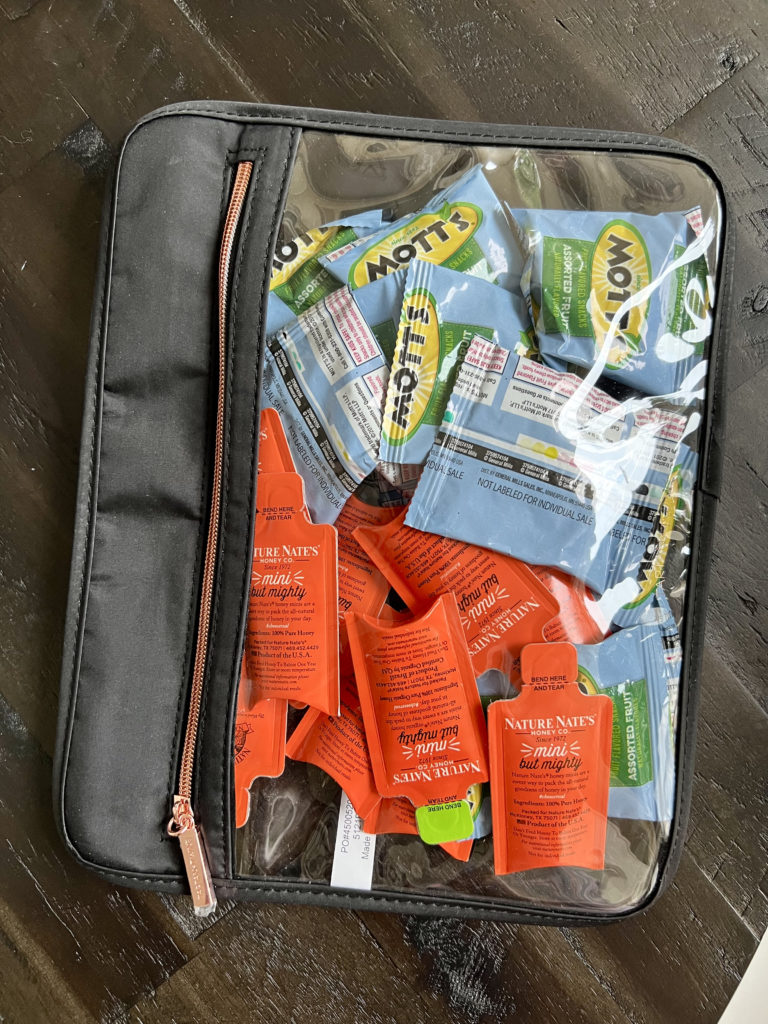
Don’t forget your TSA diabetes notification card or letter
Rules and regulations for diabetes supplies are clearly laid out on TSA.gov. The final decision, however, on what can pass through security and what cannot rests with individual TSA officers. To aid in getting through security without incident, I recommend carry a letter from your doctor (see mine above as an example), and a TSA disability notification card.
I always recommend wearing a medical alert bracelet whether you’re at home or traveling. But, it is especially important when traveling.
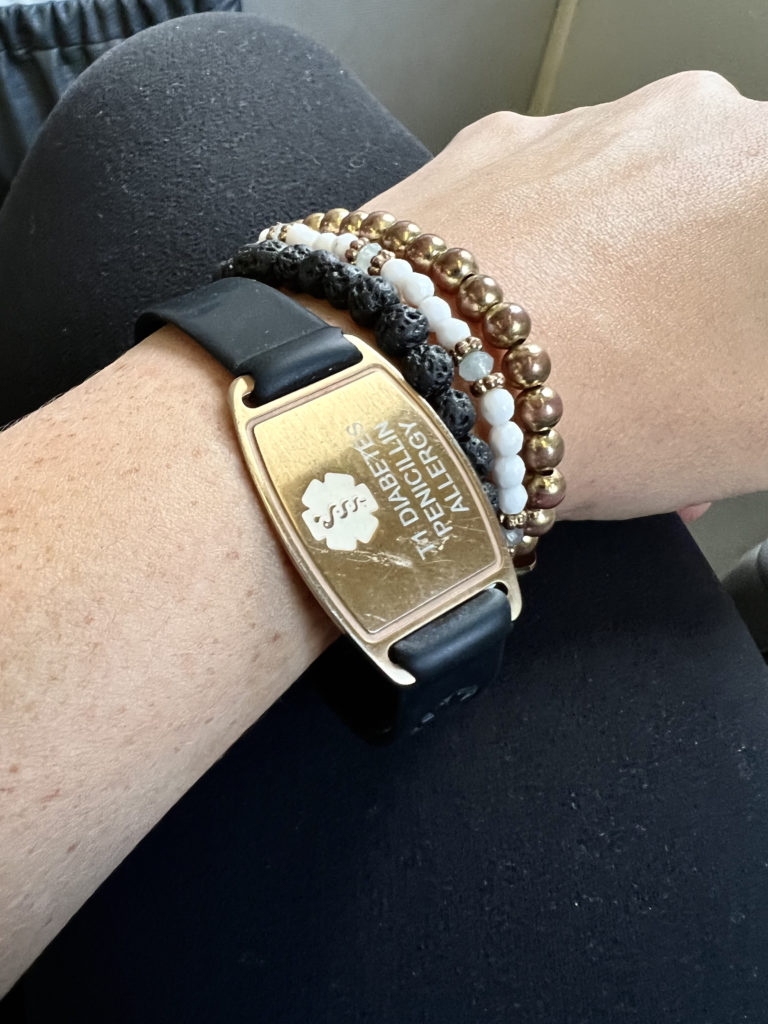
Diabetes snacks at the airport
Now that you’ve made it through airport security, let’s cover some tips for waiting at the airport and your actual trip on the plane.
Whether you brought snacks from home or are buying some after getting through security, you’ll want to make sure to focus on snacks that contain protein and fiber. We want snacks that not only will help keep blood sugars steady, but also keep you full and satisfied in the event of delays. I have a whole list of recommended snacks that you should definitely take a look at. Many of these brands are now sold at most airports.
61 Packaged Snacks for Diabetes
28 Protein and Energy Bars for Diabetes
Low Glycemic Snack Recommendations for Diabetes
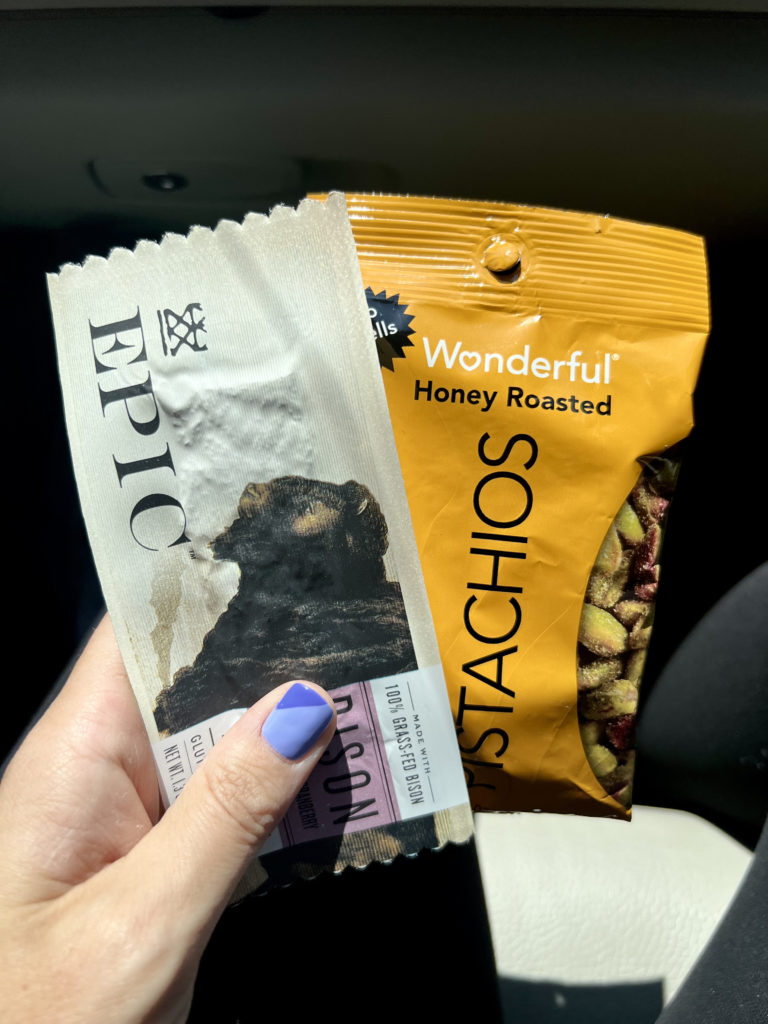
Can you take insulin on a plane?
Yes, you can and should take insulin on a plane if it is part of your diabetes management. Insulin should never be put in a checked bag.
How to transport insulin on a plane
Insulin needs to be chilled or at room temperature depending on if you are transporting vials or pens, and if it has been opened or not. Because of this, storing insulin in a checked bag is not recommended. The cargo area of a plane is usually not temperature controlled and can destroy insulin.
How do I take my insulin on a plane?
Some of my top tips for transporting insulin on a plane include:
- Use a frio insulin pouch
- Pack a small lunch kit or pouch with frozen ice packs
- Use an empty double walled tumbler (like this) and put insulin inside along with an ice pack
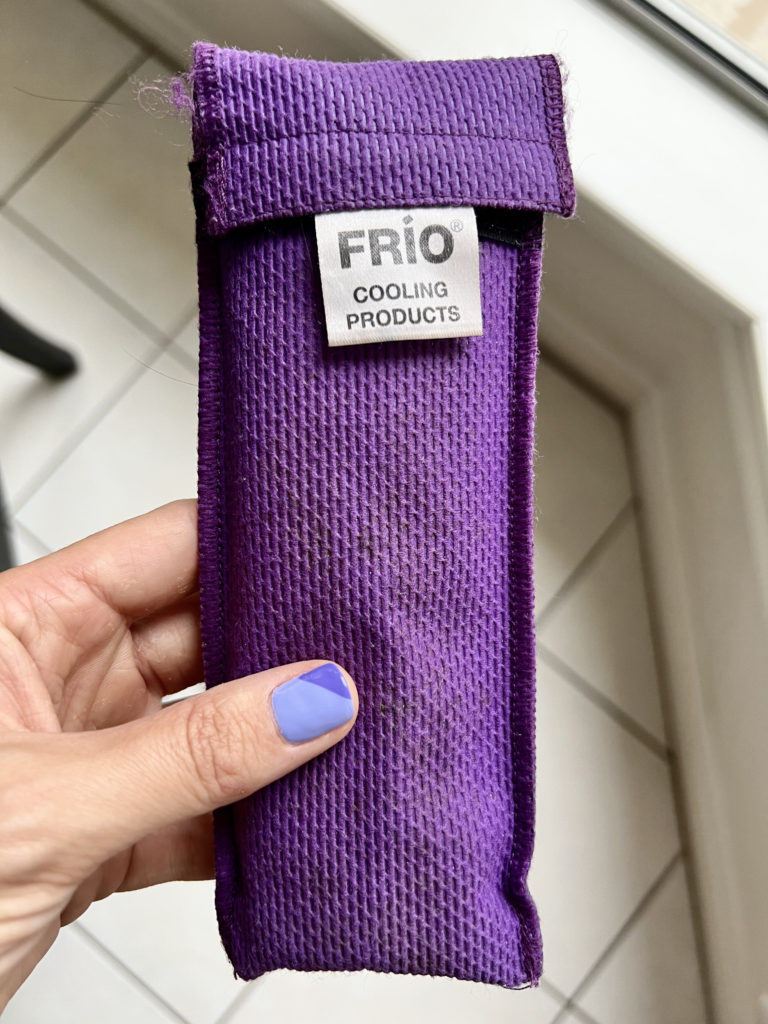
Traveling with insulin pens
When traveling with insulin pens, you will follow the same recommendations mentioned above for traveling with insulin. Follow package instructions to know what temperature your insulin should be carried and stored at.
TSA rules for insulin pens
TSA rules for insulin pens are no different than rules for insulin vials. You are allowed to bring insulin through security checkpoints and onto a plane.
Can you bring needles on a plane?
Yes. TSA states that unused syringes and pen needles are allowed through security checkpoints when accompanied by injectable medications, like insulin.
Can I bring a glucometer on a plane?
Yes, you can bring a glucometer, or blood sugar testing kit, through security checkpoints and onto a plane.
Flying can present some blood sugar challenges and may cause blood sugars to run higher or lower than normal. Having a blood sugar monitor and continuous glucose monitor with you is essential.
Preventing low blood sugars when flying with type 1 diabetes
Flying can potentially cause blood sugars to run lower. Here are some tips to prevent low blood sugars while flying:
- Disconnect your insulin pump during takeoff and landing. Pressure changes during takeoff and landing can cause extra insulin to unintentionally squirt out of the needle into the cannula. You can reconnect your pump once the plane reaches steady altitude (takeoff) or once the plane lands (landing).
- Monitor your CGM closely and chat with your doctor about changing your low alert level to a higher number while flying.
- Pack plenty of low blood sugar snacks.
Preventing high blood sugars when flying with type 1 diabetes
While low blood sugars are possible while flying, most people report their blood sugars running higher while flying. For most people this is due to the prolonged lack of movement sitting in a seat for multiple hours and the stress of flying and traveling in general.
Chat with your doctor about adjusting insulin dosages if needed, and focus on packing or purchasing high protein and high fiber snacks. And, if you’re relying on food given out on the airplane, opt for the snack boxes many airlines sell. Often, these boxes come with higher protein options and have exact carb counts on the packages.
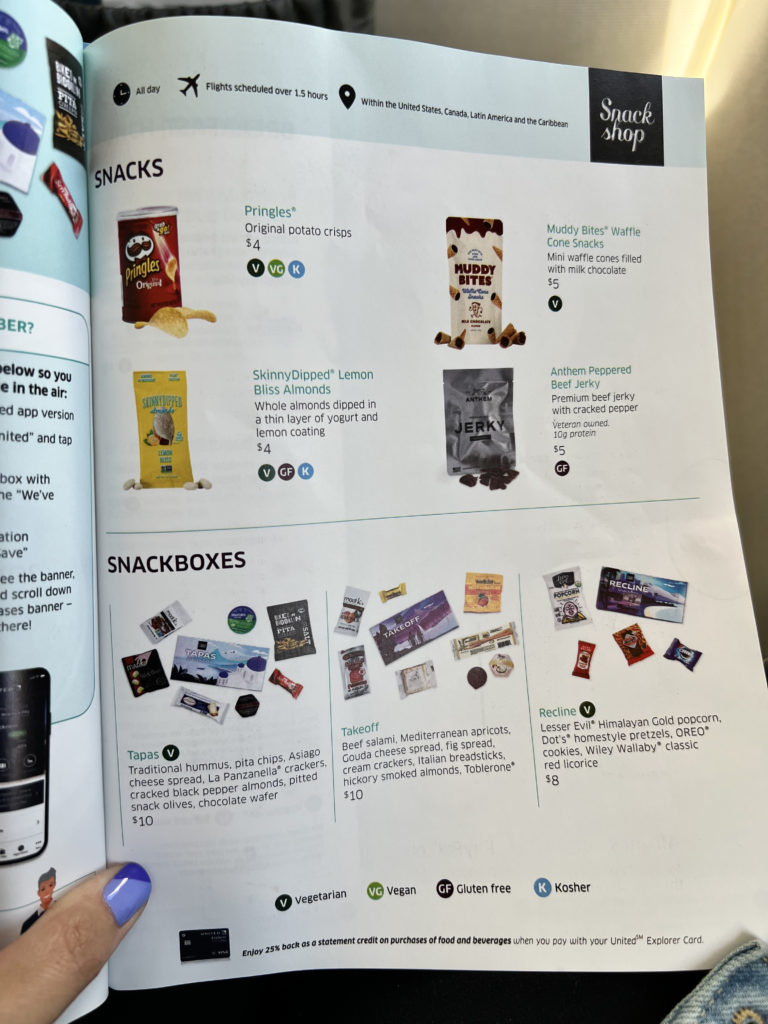
Blood sugars, time zone changes, and jet lag
Time zone changes and jet lag can also present challenges, so it’s good to be prepared ahead of time and talk with your doctor. Ask your doctor if you’ll need to adjust insulin doses or change the time on your insulin pump.
Also, remember that jet lag can lead to a lack of sleep. And, lack of sleep can cause elevated blood sugars and/or insulin resistance.
While flying with type 1 diabetes does come with some challenges and a lot of prep work, it doesn’t have to be a stressful experience. Planning ahead and being prepared are the best things you can do to ensure you have a pleasant and stress-free airport experience!
Other diabetes travel resources
If you found this post helpful, make sure to check out these other travel resources:
